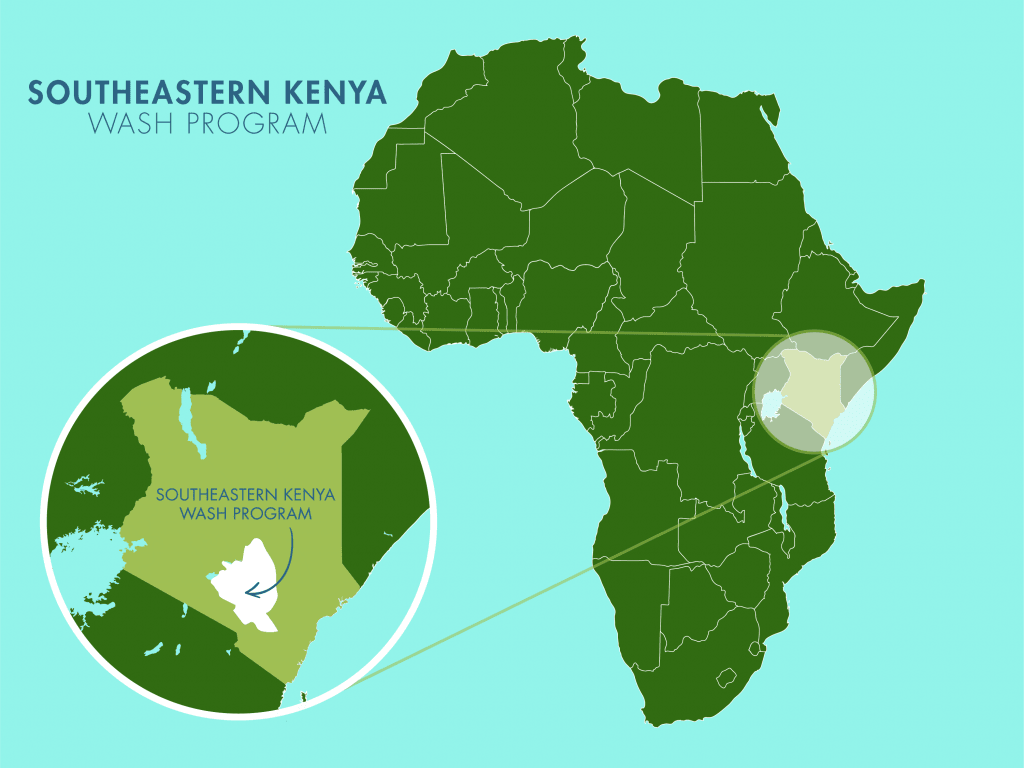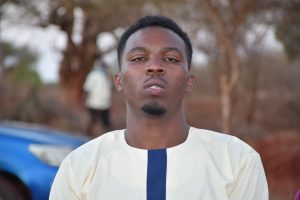The Mivau community, home to around 1,000 people, is situated in a rocky and steep part of Kitui County. Here, water scarcity defines daily life. Despite their determination, residents face long journeys over dusty and uneven terrain to reach water sources that are often unsafe and unreliable. For many, fetching water takes several hours every day—time that could otherwise be spent farming, studying, or resting. Only about a quarter of the community can access water within a 30-minute round trip, leaving most families dependent on distant and contaminated sources.

The community relies on two main water sources, both of which are far from ideal. The first, a protected shallow well, provides clear water with no unpleasant taste or smell; however, it is more than a 30-minute walk away and sometimes runs low during the dry season, forcing many to look elsewhere. The second, a surface water source, an earth dam, is much worse; it is brown in color, has an unpleasant odor, and a saline taste. The area is unclean, surrounded by animal waste, dust, and debris. It is also seasonal and difficult to collect from, forcing people to spend up to four hours fetching water and queuing for long periods under the hot sun.

Collecting surface water.
Because of these conditions, families are exposed to frequent waterborne illnesses such as typhoid, amoeba, and dysentery. The long treks to fetch water also cause fatigue and dehydration, leaving little energy for farming, herding, or household chores. Children often spend evenings and weekends collecting water instead of studying or playing, which negatively affects their school performance.
Ten-year-old Kimanga embodies both the struggles and hopes of Mivau’s younger generation. He spends about an hour every day fetching water.
“Fetching water takes [a] long [time] because of the steep terrain in our area and the several kilometers one has to walk to access the water points in our village,” Kimanga explained.
During droughts, the situation worsens.
“We get very little rainfall in our area and several months of drought. There isn’t enough water at our water source because it dries up quickly… The water we do find in [the] earth dams is dirty, and it makes me sick. I feel really sad and worried because it means we can’t drink safely or wash properly. It makes life hard," he continued.

Kimanga.
His words reveal the harsh reality of water scarcity for children. He shared, “Almost a month ago, I developed stomach pains, and my mother had to purchase drugs from the chemist to quell the aches. However, I could not go to school for some days because of my condition.”
The repeated sickness and long walks to fetch water take a toll on his education. “Other times, I’m too tired in class to focus or stay awake, especially if I had to carry water the evening before," he continued.
Despite these hardships, Kimanga holds on to a big dream: “I want to be a pilot when I grow up. I want to fly planes and see different parts of the world. But I know I have to work hard in school to achieve that dream, and that’s why I really wish we had enough water—so I can focus on my studies and stay healthy.”
The Mivau Self-Help Group has already taken steps toward lasting solutions. After building their first sand dam, they recognized the need for another project to serve community members who live farther away. Guided by their 5-year action plan and with support from Field Officer Esther Musekele, they are now preparing for a new sand dam and protected well.
This project promises to be transformative. It will bring clean water closer to where people live, drastically reduce the time spent fetching water, and improve health outcomes. With reliable water, the community will finally be able to pursue its broader development goals—planting trees, irrigating kitchen gardens, improving hygiene, and caring for livestock.

For the 1,000 residents of Mivau, water is not just a basic need; it is the key to unlocking their potential. For children like Kimanga, everyone dreams of a day when fetching water no longer defines their lives. The upcoming protected dug well offers that hope—a promise of restored health, time, and opportunity for an entire community determined to thrive.
Solving the water crisis in this community will require a multifaceted system that will work together to create a sustainable water source that will serve this community for years to come.
Steps Toward a Solution
Our technical experts worked with the local community to identify the most effective solution to their water crisis. Together, they decided to construct a protected dug well and sand dam.
Protected Dug Well Near A Sand Dam
Once a sand dam is installed and has time to mature by gathering sand and silt, groundwater increases significantly in the entire area surrounding the project. This provides a reliable source of groundwater that wasn’t possible before. As a result, wells can be constructed to take advantage of the water stored and filtered in the collected sand.
During the construction of the protected dug well, we will build a platform for the well and attach a hand pump. The community will gain a safe, enclosed water source capable of providing approximately five gallons of water per minute.
This protected dug well will be connected to a sand dam to obtain water.
Community Education & Ownership
Hygiene and sanitation training are integral to our water projects. Training is tailored to each community's specific needs and includes key topics such as proper water handling, improved hygiene practices, disease transmission prevention, and care of the new water point. Safe water and improved hygiene habits foster a healthier future for everyone in the community.
Encouraged and supported by our team's guidance, the community elects a water user committee representative of its diverse members. This committee assumes responsibility for maintaining the water point, organizing community efforts, and gathering fees to ensure its upkeep.

 Protected Dug Well
Protected Dug Well
 Rehabilitation Project
Rehabilitation Project


















